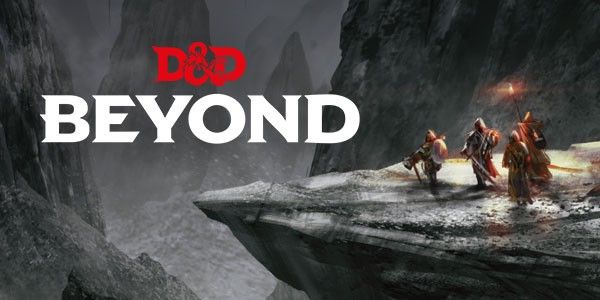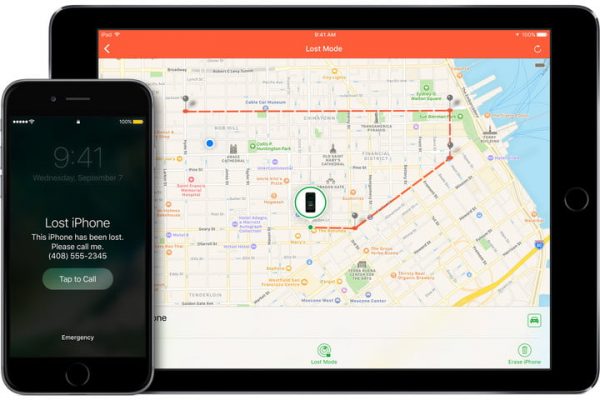lovely much everyone’s first taste of Dungeons and Dragons is building a character. It’s a pretty daunting task at first, and it puts a lot of people off to the tabletop game from the beginning. This article will fall through the steps of creating a D&D 5e character builder.
The goal here is to make the system as easy as possible so that you’re able to get into your first game and see what makes D&d 5e character builder a great RPG. However, making the character is one of the most limitless things you can do in the game. Anything is on the table here, so use this as an opportunity to dig into your new character and tissue them out. Before you start, be confirming our Character Sheet to find the best character sheet or pre-generated nature. By the decision of this article, you should have a heart that is amusing and fun to play with.
Table of Contents
Creating a D&d 5e Character builder Concept:
Before you begin rolling dice and writing down statistics, come up with an idea of who your character is. Where are they from? What was their childhood such as? What are their wishes?
Coming up with an absorbing backstory for your character can help you paint a sketch of a daredevil before you even put pencil to paper to begin writing down polls. Having an objective personality and abilities makes it easier to decide on which character options from the Player’sHandbook you’re going to use.
As we work between this article and build your character, the idea you have in your head for your nature will be interpreted into material rules- racial and class abilities, background qualities, weapon skill, and spells. As long as something you want to start with isn’t available or directly covered in the books, it might exist in another addition. Talk to your dungeon master about supposition for your character and their aims. It will help them plan the game meeting more efficiently and bring you greater satisfaction in the long run. If you find yourself suffering from the need for inspiration when making a character, think of your favorite heroes and devils from movies, books, and TV shows you like.
Draw characteristics from several heroes or villains and create a mixture of characters made up of all your favorite roles of those stories you know well. Forcing with something familiar will help you get into the game.
What you will need to play these games:
● Player’s Handbook:
This book contains all the detail you as a player need to play the game. There are quantity additions that add to the riches of D&D character formation options that you will no confusion run into during your dangers. Still, for a beginner player, this one volume is anything you require to get started.
● Character page:
Players use Character Sheets to note their characters’ various features, including abilities, skills, items, and background attributes.
Official blank and pre-generated character sheets are accessible to download and print for free from Wizards of the seaboard. Many players use modern character sheets from D&D far away or various phone apps.
As long as you’re going with a paper nature sheet, you’re going to require a pencil and an eraser. Using a pen on your nature sheet is a fundamental sin of Dungeons and Dragons. As long as you play your character well and succeed in your search, you’re going to level up. Doing so means you require to increase and increase your skills, which will take a lot of deleting.
●Dice D&d 5e character builder
You’re going to require a reliable set of dice. The basic set comprises seven sections—a d4, a d6, a d8, d12, d20, and d100. You’re turning to use the d6 to part your character’s ability origins and the d20 for all your basic parts.
The rest of the dice are coincidental, depending on which character class you choose, what equipments you use, and what spells you discover.
Once you have gathered all the gives you need to get started, you’re ready to build your heroine. Put on your innovative thinking cap and get ready to customize a character. Remember, the proposals presented in this article and the Player’s Handbook directions are just proposals.
As you build your character, use your attention and spontaneous as much as you want to. This nature is a creation of your attention to be used as you see fit. Don’t hold yourself prisoner, to what’s been done before, and likewise, don’t feel like you can’t take inspiration from living characters you know and love.
Step 1: Naming and condition
It is commonly one of the last moves in making a character for D&D, but I find it’s advantageous to have this in mind before going forward. Featuring out what your name and background can help article the options to make on race, class, adjustment, proficiencies, and tool.
With that said, feel free to rescue this for later or even as the last move.
Naming Your Character:
It is a pretty direct step in character creation. Just pick a name that seems excellent to you. Several websites will even auto-generate names (like here or here), so you can just circle through them until you state on the one you like. Some locations have long lists of store names that you can look through.
Mostly, picking a name is pretty easy, but a name can definitely article the choice of race or class. You can also fit the race to the name, or as long as you want to have some fun with it, make it totally opposite. Having a halfling controlling around with the name “Destroyer of Worlds” is great.
Deciding on Your Background:
Creating a background for your character is surely more challenging than figuring out your character’s name. In D&d 5e character builder, there are about as many laws for choosing a background as there are for selecting your name.
Since you can come up with lovely much any background you wish, it can be pretty difficult to come up with a history for your character.
Backgrounds are often tied to experience. For instance, a criminal will have duplicity and stealth. We’ll get to that skill a little later in the article, but it’s helpful to keep in mind that selecting a background will attach to this later.
For your first formate, choosing one of the 60 official frameworks in the players’ manual would be a good idea.
However, there are also hundreds of informal backgrounds to select from as well.
Step 2: Deciding on a Race
This part is lovely easy. There is a list of events in D&D; collect whichever one sounds excellent to you. Here are the common events in the game:
- Dragonborn
- Dwarf
- Elf
- Brownie
- Half-Elf
- Halfling
- Half-Orc
- Mortal
- Dragonborn
These contests are the fundamental ones you can discover.
They all on the official D&D site. There are several more doubtful classes that you can select from. Not to introduce, there are subrace you can sue to your role if you choose. For instance, some subraces for fairy are High Elves, firewood Elves, and Dark Elves.
There is also a barrel of homebrew races you can observe around the internet, which can either be used as-is or regulated to your liking.
Your race will explain the general look and feel of your nature. So take your time to select what race your character will be.
Step 3: collect A-Class
It is a pretty essential step. Your class will control what you can do in most conditions in the game. It will determine as long as you’re good at trading, a savage in action, or can simply find secret doors.
Your class will also come with several “class qualities” that are basically special facilities only your class can use. On top of that, it will decide some of the expertise you have. So take your time when selecting your class.
There are 12 classes involved in the Players Handbook:
- Cleric
- Bard
- Barbarian
- Monk
- Soldier
- Druid
- Rogue
- Ranger
- Paladin
- Wizard
- Sorcerer
You can read a little about every class on the official D&D site. Sure, just like most things in D&D, there is a ton of homebrew inequality floating around the internet. While they may not be as well purified as the base classes, it’s fun to try out a crazy homebrew class once you’ve educated the basics from your first few meeting.
Step 4: Determining Your Ability Scores
There is 6 capacity in D&D:
- Constitution
- Skill
- Strength
- Personality
- Wisdom
- Intelligence
The scores that every one of these abilities has will decide what you can do in the game. Your race will increase confirm abilities, and your class will determine what abilities are especially useful.
There are multiple ways to determine your ability scores. We’ll jump into each of them so you can decide which you would like to use.
The Classic Method
At first, the way ability scores were determined was by rolling 4 six-sided mince. You would collect the highest 3 numbers and add them together.
It was done for each capacity. However, there is some volatility to this. So you could likely end up with an, in fact, good part or really bad part.
Some of the other techniques reduce the randomness, but this is the classic way to do it, and there is something special about doing things the way the game was designed.
Pre-planned Numbers
This technique is the least random, but that also means it has the least amount of inequality. Cause of that, it can be a little less joke. However, it’s a great technique for your first time playing D&D.
Take these 6 numbers:
- 8
- 10
- 12
- 13
- 14
- 15
Set each one of those numbers to an ability. You should set the higher numbers to the ability that will support your class out the most.
While not as exciting as rolling for capacity, this technique will confirm you don’t end up with a terrible roll on your abilities.
Point Buy D&d 5e character builder
This technique has a little piece of what makes both of the previous methods good. It provides you a little versatility so that you are not using the same numbers every time and keeps you from having irregular capacity scores through rolling.
Here’s how the technique works:
- Each ability score begins out with 8 points
- You are provided a pool of 27 points to set towards your choice of abilities
- No one capacity can be over 15 (before race ability increases)
Again, a lovely easy but great way to reduce randomness and still have some variability in your characters each time.
Step 5: Deciding on the instrument
Just like with choosing your capacity scores, there are a couple of techniques to do this. Both are pretty easy:
- Taking your class and background instrument
- Buying starting equipment
As long as you decide to take the instrument controlled by your class and backdrop, there isn’t much else to do. You’re ready to acquire with your group and play.
However, as long as you decide to buy your equipment, you’ll roll 3-5 four-sided dice and increase that result by 10. That’s your starting gold bits. You can then look between the list of instruments and their prices and decide which pieces you will buy.
Further Customization of D&d 5e character builder
Every formate background gives proposals for four explanation characteristics: Personality attributes, Ideals, Bonds, defects. These will help you get into your character’s headspace. Discovering a unique personality, you can bring to the table supports you to part play your character and plunge yourself into the fantasy world the game makes.
Characters that reach the 4th level are granted an ability score increase. As long as you choose, you can instead take an achievement. Feats are abilities that grant you additional in-game options for attacking, skill use, and magic. You can also use feats to gain expertise with different weapons and protection. Characters who take the right achievement can become a very powerful fighter or extremely versatile in non-combat scenarios.
Some Suggestions:
As long as you will make a higher level character, you require to have different kinds of equipment and different DM for this. The only thing that can support you right now is to level up for your character every time. Each class comes up with a perfect set of types of equipment. Users are free here to choose any one of them from the provided below. Moreover, you can also choose a roll for starting gold and purchasing everything here.
FAQs on D&d 5e character builder
1)Firstly, why does your character need a history?
Creating an engaging character backstory will not only acquire you excited about your character and give a signal to roleplay them, but it will also provide the DM tools to grow the drive in a method that further develops your character and participation.
It will also explain how their adjustment and motivation will affect their decisions while dominating their bonds, ideals, defects, and personality attributes. A deeper backstory presenting identified binds to places, people, and things will pull out a stronger plug-in to the world that the DM is always craving to plunge you, the player, in.
To a new player, complete a blank character sheet can seem like an unsettling task. By following the principles of D&d 5e character builder creation as outlined in this article, you too can simply create the epic adventurer of your dreams. The only limit is your imagination!
Also, lovely much any information you need in regards to D&D is available at DnD Beyond. I would highly recommend using the website to the fullest extent.











